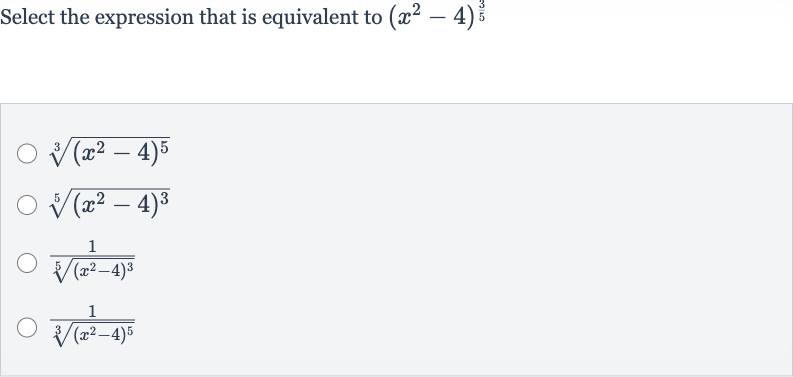AI tutor
Full solution
Q. Select the expression that is equivalent to
- Understand Notation: We need to understand the notation for roots and powers. The expression can be interpreted as the th root of raised to the rd power, because the denominator of the fractional exponent indicates the root and the numerator indicates the power.
- Analyze First Option: Let's analyze the first option: . This expression represents the cube root of raised to the th power. This does not match our original expression because the root and the power are reversed.
- Analyze Second Option: Now let's look at the second option: . This expression represents the root of raised to the power, which matches the structure of our original expression .
- Analyze Third Option: The third option is . This expression represents the reciprocal of the root of raised to the power. This is not equivalent to our original expression because of the reciprocal.
- Analyze Fourth Option: The fourth option is . This expression represents the reciprocal of the cube root of raised to the th power. Again, this is not equivalent to our original expression because of the reciprocal and the reversed root and power.

